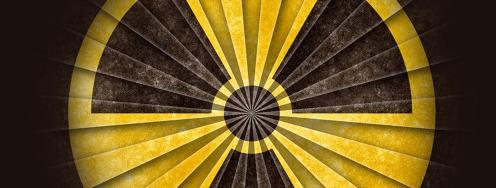Iran Nuclear Deal Critical for U.S. Interests and Regional Security
On the radar: Much to gain from deal, must lost with failure; PMD investigation continues; New START data shows increases; ICBM upgrades in North Korea; and Inspector General slams Los Alamos over waste storage incident.
October 2, 2014 | Edited by Jacob Marx and Will Saetren
On the radar: Much to gain from deal, must lost with failure; PMD investigation continues; New START data shows increases; ICBM upgrades in North Korea; and Inspector General slams Los Alamos over waste storage incident.
October 2, 2014 | Edited by Jacob Marx and Will Saetren
"Naysayers be frustrated” - “It is critical that this doable deal get done, the naysayers be frustrated, and a rancorous American-Iranian bust-up not be added to the ambient mayhem in the Middle East. The Islamic Republic, 35 years after the revolution, is — like it or not — a serious and stable power in an unstable region. Its highly educated population is pro-Western. Its actions and interests are often opposed to the United States...and its human rights record is appalling, but then that is true of several countries with which Washington does business,” writes Roger Cohen of The New York Times.
--“An important recent report from The Iran Project — whose distinguished signatories include Brent Scowcroft, Zbigniew Brzezinski, Thomas Pickering, Ryan Crocker, John Limbert (the former U.S. hostage in Tehran), Joseph Nye and William Luers — put the U.S. strategic interest in a deal well: ‘There is a strong link between settling the nuclear standoff and America’s ability to play a role in a rapidly changing Middle East.’ A nuclear agreement, the report said, ‘will help unlock the door to new options’.”
--“For them to be opened up, a workable narrative has to be found, one that satisfies Congress, and satisfies Iran’s hard-liners...That is a tall order.” However, “a deal can and must be done for the simple reason it is far better — for Iran, the United States, Europe and Israel — than any of the alternatives.” Read the full column here. http://nyti.ms/1r1lMgx
Cited above - “Iran and Its Neighbors: Regional Implications for U.S. Policy of a Nuclear Agreement” by the Iran Project. Full report here. http://bit.ly/1wEkbp5
Tweet - @nukes_of_hazard: On #Iran: "Failure would be unmitigated: Renewed estrangement, #war drift. A #deal can and must be done" Via @NYtimeshttp://ow.ly/CcsqG
IAEA on PMD - “[The IAEA] and Iran may meet early next week in Tehran, with the IAEA seeking to achieve progress in the slow-moving inquiry into the country's nuclear program,” reports Fredrik Dahl for Reuters. “Early last month, the IAEA said Iran had failed to answer questions by an agreed Aug. 25 deadline about two areas of the investigation into alleged research activities that could be applicable to any attempt to make nuclear bombs - explosives testing and neutron calculations.”
--“Western officials say that although there is no chance of the IAEA inquiry being completed before the scheduled end of the six-power talks, some of the sanctions relief Iran is seeking would probably depend on its cooperation with the U.N. agency. Read the full story here. http://reut.rs/1rP5Pzi
Tweet - @GEsfandiari: 354 House members express concern about #Iran's "refusal to cooperate with international nuclear inspectors" http://1.usa.gov/1vctQyY
New START data - As of October 1, under data for the New START treaty, the U.S. had 1642 nuclear warheads deployed on 794 out of a total 912 strategic delivery vehicles. Russia had 1643 nuclear warheads deployed on 528 out of a total 911 strategic delivery vehicles. The State Dept. provides the aggregate numbers.
--These numbers represent slight increases in deployed warheads and delivery systems since the previous data exchange in March. http://1.usa.gov/1i22SSI
Little mystery there - “Where did the new 30 deployed launchers and 131 warheads come from? Most likely from the two Project 955 Borey submarine. Two submarines can carry 32 Bulava missiles with as many as 6 warheads each - this alone could have added 192 warheads..Then there are ICBMs. Two silo-based RS-24 Yars missiles were installed in silos in Kozelsk in August 2014 - that would add two missiles and eight warheads,” writes Pavel Podvig of Russian Forces. “It would take a closer look at the numbers to see if all this adds up, but it appears that there is no mystery in Russia's New START numbers.”
--“An agreement between Iran and the P5+1...could (and likely would) stall, if not preclude, further nuclear proliferation in the region. It could also catalyze progress toward Iranian rapprochement with the United States and other Western countries. Its regional impact would depend in part on whether it was judged as likely to prove effective in curbing Iran’s presumed nuclear ambitions. If so, it could facilitate the regional accommodations necessary to restore stability in the Middle East and wider Muslim world.” http://bit.ly/1vAmEPH
Bibi meeting - In a meeting at the White House yesterday with President Obama, Israeli Prime Minister Benjamin Netanyahu reiterated his position that Iran can not be allowed to become a “threshold” nuclear state. Matt Spetalnick has the full story for Reuters. http://reut.rs/1mRteQ9
North Korean upgrades - “Recent commercial satellite imagery indicates that North Korea has completed a yearlong project to upgrade its main satellite launching station, which is widely believed to be a test site for its intercontinental ballistic missile program, a United States research institute said on Wednesday,” writes Choe Sang-Hun for The New York Times.
--The upgrades include modifying the gantry tower and launchpad there, which analysts said would give North Korea a facility to launch a longer-range rocket that can carry a heavier payload. “North Korea is now ready to move forward with another rocket launch,” the U.S.-Korea Institute at Johns Hopkins University said in a report published on its website on Wednesday. “Should a decision be made soon to do so in Pyongyang — and we have no evidence that one has — a rocket could be launched by the end of 2014.” Read the full story here. http://nyti.ms/1vAmyGO
WIPP report - “A report issued Wednesday by the inspector general of the U.S. Department of Energy squarely places blame for the shutdown of the nation's only underground nuclear waste repository on failures at Los Alamos National Laboratory. The inspector general's office identified several major weaknesses in the lab's procedures for packing contaminated gloves, tools and other radiological wastes that were destined for permanent storage at the Waste Isolation Pilot Plant in southern New Mexico.”
--“The report reinforces the findings of internal reviews done by the lab and the Energy Department after a canister of waste from Los Alamos leaked in one of WIPP's storage rooms in February, contaminating 22 workers and forcing the indefinite closure of the nuclear waste repository.” Susan Montoya Bryan has the full story for the Associated Press. http://huff.to/10mndRn
Quick Hits:
--“Safeguards in Vienna,” by Andreas Persbo for Arms Control Wonk. http://bit.ly/1vxxsMD
--“UK nuclear bomb factories rapped by watchdogs over radioactive waste,” reports Ron Edwards for The Guardian. http://bit.ly/1sOyaYC
--“Mobile-Basing: Can't Keep a Bad Idea Down,” by Greg Terryn, in the Nukes of Hazard Blog.http://bit.ly/1CHmMiq
Events:
-- “The UK Strategic Nuclear Deterrent and the Chevaline Program: An Overview,” featuring Matthew Jones, Professor of International History at the London School of Economics. Oct. 3, 12:00pm - 2:00pm, hosted by the Nuclear Proliferation International History Project at the Woodrow Wilson Center. RSVP here. http://bit.ly/1qyEuvE
--"The Future of U.S. Extended Deterrence in East Asia," featuring Richard Armitage, Armitage International, and Kurt Campbell, The Asia Group. 8:30 a.m., Oct. 6, Atlantic Council, 1030 15th St. NW, 12th Floor, West Tower, Washington. RSVP here. http://bit.ly/1uKYbV9
--Public meeting for the Commission to Review the Effectiveness of the National Energy Laboratories. Oct. 6, 10:00am - 3:30pm in Alexandria, VA. Details here. http://1.usa.gov/1udhOIV
--“Unmaking the Bomb: A Fissile Material Approach to Nuclear Disarmament and Nonproliferation,” featuring Zia Mian, Alexander Glaser and George Perkovich. October 7, 3:30 - 5:00pm at the Carnegie Endowment for International Peace. Details here. http://ceip.org/1vpfWMd
--”The Governance of the Nuclear Security Enterprise,” featuring Norm Augustine, Congressional Panel on the Governance of the Nuclear Security Enterprise. 12:15-1:30 p.m., Oct. 9, University of Maryland. 1203 Van Munching Hall, College Park, MD. Details here.http://bit.ly/10moaJr
--“Destroying Syria’s Chemical Weapons Aboard MV Cape Ray,” featuring Timothy Blades, Edgewood Chemical Biological Center. 12:30-2:00 p.m., Oct. 10, National Defense University, Lincoln Hall, Room 1119, 300 Fifth Ave. SW, Fort McNair, Washington. Off the record. RSVP to Nima Gerami at Nima.Gerami@ndu.edu.
--“Preventing Proliferation and Advancing Nuclear Disarmament.” Annual Meeting of the Arms Control Association. Oct. 20, 9:30am - 2:30pm at the Carnegie Endowment. RSVP here. http://bit.ly/1uGHZnS



